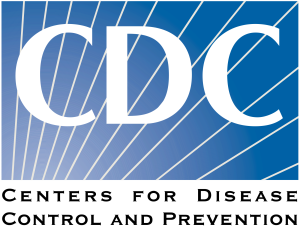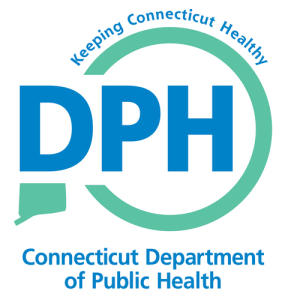(HARTFORD, CT) – Governor Dannel P. Malloy announced today that the State of Connecticut is taking additional steps to strengthen the level of preparedness for the Ebola virus by enacting the quarantine and isolation protocols that were authorized under the order he signed last week. In addition, the Governor is directing that every hospital in the state perform a drill within the next week to assure that procedures and Emergency Medical Services (EMS) are up to standard.
While conversations between different levels of government and state hospitals have been ongoing for months, the Governor today also announced that he is convening a Unified Command Team (UCT), chaired by Jewel Mullen, Commissioner of the Department of Public Health (DPH), to serve as point in the state’s ongoing emergency management efforts. The team will be responsible for the coordination of resources and personnel and provide a single point of contact for communication with the public. They will also be responsible for certifying that front line personnel at both acute care and community health care facilities and first responders have received the necessary training to deal with a potential case effectively and safely.
“We have been taking this situation very seriously for weeks,” said Governor Malloy. “Over that period of time, we have been working with health officials to prepare for a potential case here in Connecticut, and I am today formalizing that effort with the establishment of a Unified Command Team. While we don’t yet know if there is a confirmed case of Ebola in our state, the report that a Yale student has exhibited symptoms demonstrates why preemptive action is the right approach. I believe we must go above and beyond what the CDC is recommending, just as we did last week when I issued a preemptive declaration. I want everyone to know – from the nurses in our emergency rooms to our first responders and our law enforcement personnel – we will provide whatever resources we have at our disposal so that you can do your critically important jobs safely and effectively.”
The UCT will be composed of officials from the Governor’s Office, the Department of Public Health, the Department of Emergency Services and Public Protection, the State Department of Education, the State Department of Energy and Environmental Protection, the State Department of Administrative Services and the Department of Corrections.
Governor Malloy said that for several weeks, the state has been communicating with Connecticut hospitals and other health care providers providing them with the most up to date information and guidance from federal health authorities.
Last week, Governor Malloy issued an order declaring a public health emergency as a precautionary matter. The order gives the Commissioner of the Public Health Department the authority to quarantine and isolate an individual or a group of individuals whom they reasonably believe has been exposed to the Ebola virus or infected with the Ebola virus. The order was executed as a precautionary and preparatory measure in the event that the state has either a confirmed infection or has confirmed that someone at risk of developing the infection is residing in the state.
Earlier this month, Commissioner Mullen asked each hospital to complete a detailed hospital checklist for Ebola preparedness. During the Unified Command briefing, Commissioner Mullen said that all acute care hospitals had completed and returned the checklist. She said DPH also held a conference call with hospital representatives this week to review their preparedness efforts.
“Connecticut hospitals clearly have a heightened level of awareness for detecting a patient with Ebola, given the level of cooperation we have received in preparing for a possible case,” said Dr. Mullen. “The survey shows that every hospital is engaged in planning and preparedness around Ebola. Critical to preventing an Ebola outbreak in the United States is that all hospitals are able to recognize when a patient may be at risk for Ebola and take the appropriate steps. We continue to work with hospitals to ensure they can detect a patient with Ebola, protect health care workers so they can safely care for the patient, and respond in a coordinated fashion with their healthcare system.”
United Way 211 is providing information and links on its website at www.211ct.org, or you can call 2-1-1.
Today, the Governor and the Commissioner are issuing the following guidance, which is more stringent than the guidelines thus far issued by the Federal Center for Disease Control and Prevention (CDC): If you become sick with a fever a fever with and/or any of the symptoms of Ebola virus disease such as nausea, vomiting and diarrhea, and you:
- Have traveled to Liberia, Sierra Leone, or Guinea in the last 21 days, or
- Have had contact with a person who has Ebola virus disease.
You will be sent to a hospital for evaluation and placed in room separate from other patients – this is called isolation.
If you are not sick, but have traveled to affected areas or been in contact with an infected individual, you will be required to stay at home for 21 days and take your temperature twice a day. Public heath health workers will contact you twice a day by phone to see how you are doing. This is called quarantine. If you develop a fever or other symptoms suggestive of Ebola virus during the time that you are required to be home, you will be sent to a hospital for evaluation and placed in room separate from other patients.
“The first responder community continues to monitor the current situation and prepare for any potential threat to public safety or health using their established protocols,” said Department of Emergency Services and Public Protection Commissioner Dora B. Schriro. “We are at the ready to assist and support our local partners in this critical state-wide effort.”
According to the CDC:
- You can’t get Ebola though air
- You can’t get Ebola through water
- You can’t get Ebola through food.
You can only get Ebola from:
- Touching the blood or body fluids of a person who is sick or has died from Ebola
- Touching contaminated objects, like needles
- Touching infected animals, their blood or other body fluids or their meat.
###
For Immediate Release: October 16, 2014
 CDC Tightened Guidance for U.S. Health Care Workers on Personal Protective Equipment for Ebola
CDC Tightened Guidance for U.S. Health Care Workers on Personal Protective Equipment for Ebola

